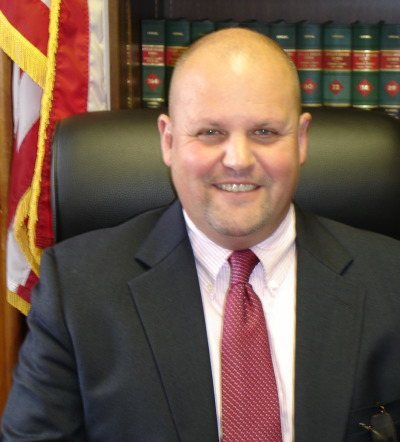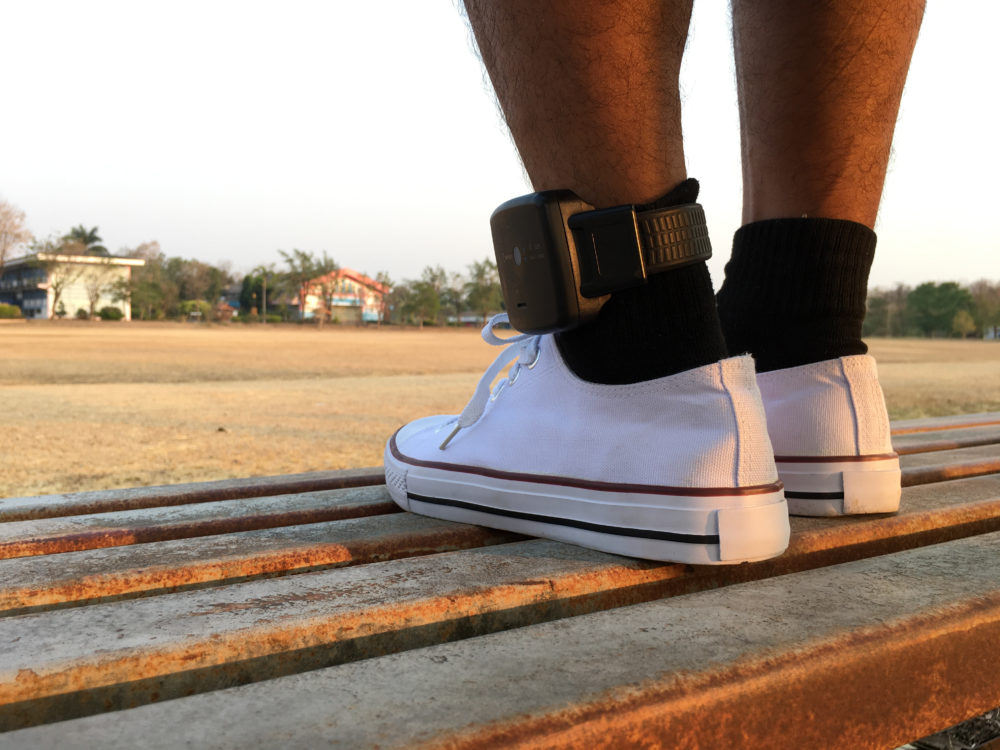The “T” in ConcepTS stands for Terry. At 19, he died by suicide after completing an incarceration-diversion program that kept him out of prison for robbery. He’d been physically and sexually abused in his childhood home, according to what he shared while in that program. (Juvenile Justice Information Exchange omitted Terry’s last name because persons from that boyhood household weren’t reached for comment about his abuse allegations.)
 Launched in summer 2021 as an expansion of the incarceration-diversion program, Long Island, N.Y.’s ConcepTS also stands for “collaboration, oversight, nurturing, community, engagement, participation and treatment services.” It’s the brainchild of Suffolk County Supreme Court Justice Fernando Camacho, who says he has a heart for young people and a love of the law. The Juvenile Justice Information Exchange’s Micah Danney interviewed Camacho about what diversion programs mean for juvenile offenders and the juvenile justice system he helps to oversee. This is an abridged version of their conversation.
Launched in summer 2021 as an expansion of the incarceration-diversion program, Long Island, N.Y.’s ConcepTS also stands for “collaboration, oversight, nurturing, community, engagement, participation and treatment services.” It’s the brainchild of Suffolk County Supreme Court Justice Fernando Camacho, who says he has a heart for young people and a love of the law. The Juvenile Justice Information Exchange’s Micah Danney interviewed Camacho about what diversion programs mean for juvenile offenders and the juvenile justice system he helps to oversee. This is an abridged version of their conversation.
The Conversation
JJIE: You dedicated this new initiative to the memory of a young man whose case you presided over. Why?
Judge Fernando Camacho: I was sad. This was a phenomenal kid. Everybody loved him. His smile … would light up the room. He could have been anything. He did great in the program but we failed him. He left us without enough support to address the trauma he carried with him. Some of these kids, they’ve suffered more trauma than you or I can imagine in two, three, in 15 lifetimes.
The five core areas where kids have problems are housing and their families, substance abuse, mental health, education and gang involvement.
How does ConcepTS change or enhance the existing Suffolk County Juvenile Treatment Court and District Court Felony Youth program, which combine supervision with individualized social services? What outcomes do you hope those changes will yield?
We’re identifying resources [like transportation options, mentors, after-school groups] within the local communities and bringing them to the program. There are four phases: the assessment phase, the disposition — the “here’s what is expected of you” — the compliance phase and the after-care phase. So, there’s the information gathering, the collaboration and communication between local and state agencies, and, then, the local people, the good people who want to help their children. Twenty-five years ago, a woman was standing in my court screaming, “Please, judge, help me, I don’t want to lose my child to the state prison system.”
We did not stand shoulder-to-shoulder with that parent. We didn’t give them enough support, enough help. We’d simply say, “Nope, can’t do it. It’s too difficult.” Sure it’s difficult, but it’s our obligation.
An article in Newsday described your District Court Felony Youth program as having assembled a “small army” of multidisciplinary partners. The ConcepTS court uses something similar. What does this coalition add that the first lacked?

Courtesy of NYS Commission on Judicial Conduct
Suffolk County Supreme Court Justice Fernando Camacho.
I know after all these years that some service providers do great work and some do terrible work. Part of it is identifying the successful organizations — what I call my miracle workers — and getting kids connected with them. And sometimes it’s not the best-funded [service providers].
We have to understand, [that many of] these kids have severe traumas to overcome. After two or three years [of compliance with the program], you can’t say, “Ok, wonderful, good job! We have another success story here.” No. This has to go beyond that.
What we were missing was setting up these resources within the community so these kids can say, “You know, I’m slipping back into my drug habit, I’m feeling really depressed.” Ok, let’s take a step back and get you back into the program. That piece, we missed. I’m not going to miss it in this program.
Critics of the youth court have said it keeps young people under its official supervision for too long. What’s your response to that?
When I put kids on probation or give them some conditions, I say, “Kid, I’m not doing this to give you a hard time or to make your life more difficult. I’m doing what I need to do until I’m satisfied and have [provided] enough support services to overcome whatever issues caused you to become court-involved.”
I don’t know about other judges, I’ll speak for myself: I hold onto kids until I’m confident — certain — that they don’t need me anymore. I only hold onto them until I’m certain that they’re safe.
Do current philosophies and practices of probation align with yours? Or, would training or any other intervention be required for probation officers to adjust to your new guidance?
I have a great relationship with probation. They know exactly what I’m looking for. We’re on the same page. They’re part of the meetings and they understand exactly what it is that I expect from the kid and they know exactly what it is that they need to do in terms of meeting those expectations. So I don’t have any problems.
If probation and courts increasingly divert kids from prisons, how might probation itself be reformed to stop what critics say is an over-reliance on technical violations for relatively minor infractions that lengthen probation or, perhaps, result in kids going to prison?
I don’t have that experience with probation. It’s about making probation a partner with the court, with the Department of Social Services, with the Office of Children and Family Services, so that we’re all on the same page: “Before you file a violation, officer, let’s all talk about this. If it’s a technical violation, what can we do to fix that without a violation of probation?”
Some kids who criticize me say, “Judge, you keep making me come back every three weeks, in addition to probation.” I don’t want to hand you off to probation and then, nine months later, I get a violation notice about this kid who’s in handcuffs and I’m, like, “This has been going on for six months? Why don’t you keep me in the loop?”
Community collaboration and multidisciplinary cooperation is crucial.
Regarding technical violations, is your new court designed to address that criticism? How does it strike a balance between punishment and allowances that help a juvenile get on a better path?
The conditions of probation are absolutely not punishment. They are an opportunity for this child to get the support and the services they’ve never had before. There’s no condition that I’m going to put in place that is not for your own good. If you are feeling that this is not working, I encourage feedback. If a parent comes to me and says, “Judge, my son is playing football now and he can’t wear the GPS [ankle monitor] because he isn’t allowed to practice,” I’ll call the coach … Again, it’s about making sure conditions of probation are not punitive, they are meant to help.
What, in your mind, are the effects of having a youth cited for technical violations wear a GPS ankle bracelet? How does that affect their everyday doings? How does it help? How does it harm?
Some kids need GPS because otherwise they’re going to be running around doing crazy things. If a mom is telling me her kid’s not home at 7 p.m. or 9 p.m., I want this kid to understand: Ok, kid, you’re running around with gangs, not coming home, you’ve got to wear a GPS.
There are kids who really need the GPS because, otherwise, they’re going to get into trouble, get re-arrested.
Will this multidisciplinary system treat kids from well-to-do and poor homes equitably?
Every kid, every family has different issues. But once we’ve identified those, in terms of everything else, in my court, they are treated exactly the same. I don’t care where a kid is from, I want to help children. That should be the attitude throughout the court system. And I’m not saying it is all the time … but that should be the goal.
If a kid says they aren’t reporting to probation because they can’t get a ride, I have enough resources that are partnered with me: “Alright, let’s make sure this kid gets a ride.” Once you know what the problem is, you can fix it.
You’ve lamented a general lack of leadership and cooperation between agencies tasked with addressing the myriad needs of this population of young people. How far does this multidisciplinary coalition go in addressing those deficiencies?
It’s breaking down the barriers. Many of these agencies have not worked together in the past. They see themselves as having different goals, different agendas. They need to come together, and they are coming together, to understand our shared goals.
For more information on re-entry, go to our sister site
Juvenile Justice Information Exchange’s
► JJIE Resource Hub | Re-entry
I’m not saying this is an easy process or that sometimes there isn’t pushback: “We don’t do it that way, judge, we’ve never done it that way.”
I know, but we should start thinking about doing it that way.
How does what young people under your supervision say about their needs and wants, whether essential or unessential, factor into your initiative?
You can’t just lecture a kid and tell them, “You did this wrong, that wrong.” You ask them: What do you think you need? What do you want to talk about? Do you want to have a house, do you want to have a … ? What is it that you want? Ok, now what do we need to do to get there?
It’s about figuring out what they need to reach their goals and making them understand that they and their families are part of the process. I don’t want to be this guy up there yelling and screaming, lecturing them. Make them a part of their own future, that’s huge.
What, if any, innovative proposed reforms or actual programs elsewhere in the country are you watching? Emulating? How does your project highlight and push forward this broad issue of efficiency and fairness in juvenile justice?
I do speak to other judges in other jurisdictions. Sometimes I’ll take their ideas. I don’t want to sound cocky, but I’ve worked a long time with enough kids who’ve been through the system that I understand what works and what doesn’t. I go to conferences, I go to seminars, I listen to other judges. But, at this point, I’ve developed my own model that I believe, at least in my jurisdiction, works best.
I’m still learning — everybody can still learn — but I’m pretty confident in where I am right now. It’s a different way of looking at the juvenile justice system. It’s an emphasis on early intervention, helping them at an early age when they first become court-involved, when they’re still impressionable, and stopping that involvement right there.
































